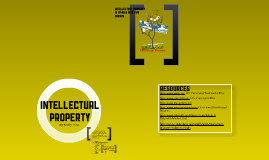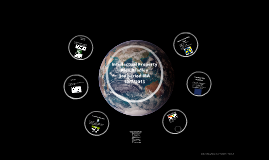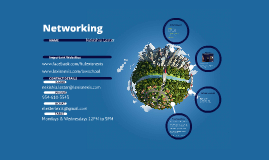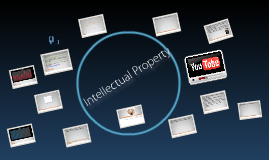Intellectual Property
Transcript: Chapter 6 Intellectual Property Kristine Atchison Jeff Roemhildt Nakeea Loser Copyright (History) -First invented by The British after the printing press was invented in the 1440’s -1990’s- “motion picture, phonograph, radio, television, the computer, tape recorder, photocopy machine, and satellite, cable, and other communication technologies. Copyrightable Works Includes: literary, pictorial, and graphic creations Compilation (Collective Work) Derivative Work Notice Example: copyright © 2002 John Doe Registrations and Deposit Copyright Ownership Works made for hire Government and Copyright Rights Copyright Act "exlusive right to copy or reproduce a work, to create adaptations or derivatie works, to distribute copies of a work, and to perform and display the work publicly." Copying Derivatibe Work Transformations or adaptations of existing works Sequels, films, plays, and cartoons, all based on the original novel Authors can authorize seperate copyrights on any number of derivative works Distribution Authors right to publish, sell, loan or rent copies of copyrighted work Does not include resale Display Performance Performance License for Musical Compositions Performance Licensing for Sound Records Compulsory Licenses Moral Rights Berne Convention for the protection of Literary Artistic Works Infringement 1. Direct 2. Contributory 3.Vicarious Safe Harbors: Online Service Providers Circumventing Technology 1. Audio/Video Copyright Attempts A. Digital Millennuim Copyright Act of 1998 B. Lawsuits 2. Video: Napster's Impact a Decade Later http://money.cnn.com/video/news/2009/12/23/n_cmr_napster_10yrs.cnnmoney/ Fair use Doctrine Creates an exception to the law prohibiting unauthorized copying of copyrighted expression. Developed in common law and part of the Copyright Revision Act Section 107 permits limited copying of copyright work, usually only for "productive" purpose such as nes reports Transformative...new expression, meaning or message Factors There are four factors that are considered by the courts before they can determine if copying constitutes a fair use. Purpose and Character of the use -News: 2009 – Shepard Fairey vs the Associated Press – “visual reference” Parody A parody distorts or closely imitates another work to make fun of the original work Advertising Commercial Advertising Comparing Competing Products (furthers public intrest) Nature of the Copyrighted work Databases and Stock Tables vs. Novels and Plays News Reports vs. Movies Amount and Substantiality of the portion used Quantity Quality The effect on the potential market value of the work Most important factor for determining fair use Present Market and Potential Market Unfair competition Misappropriation – the unauthorized taking of the benefit of someone else’s investment of time, effort, and money. -International News Service (INS) vs. Associated Press (AP) -INS employees took breaking news from the AP office bulletin board and put it on the INS wire. -Court – INS Misappropriated AP’s expenditure of time and effort in gathering and assembling facts. - -Sports -National Football League – 45 seconds per day -Major League Baseball – Limits Number of Photos Trademarks – is the word, name, or symbol a company uses to identify itself as the source of goods. -Misuse of another’s trademark is unfair competition First Amendment- TM used in unauthorized comedy, parody or critsim it may be protected. -Gather News -Public Intrest Unlike copyrights and paten, which are protected for limited times, a trademark lasts as long as it is used in commerce.

















